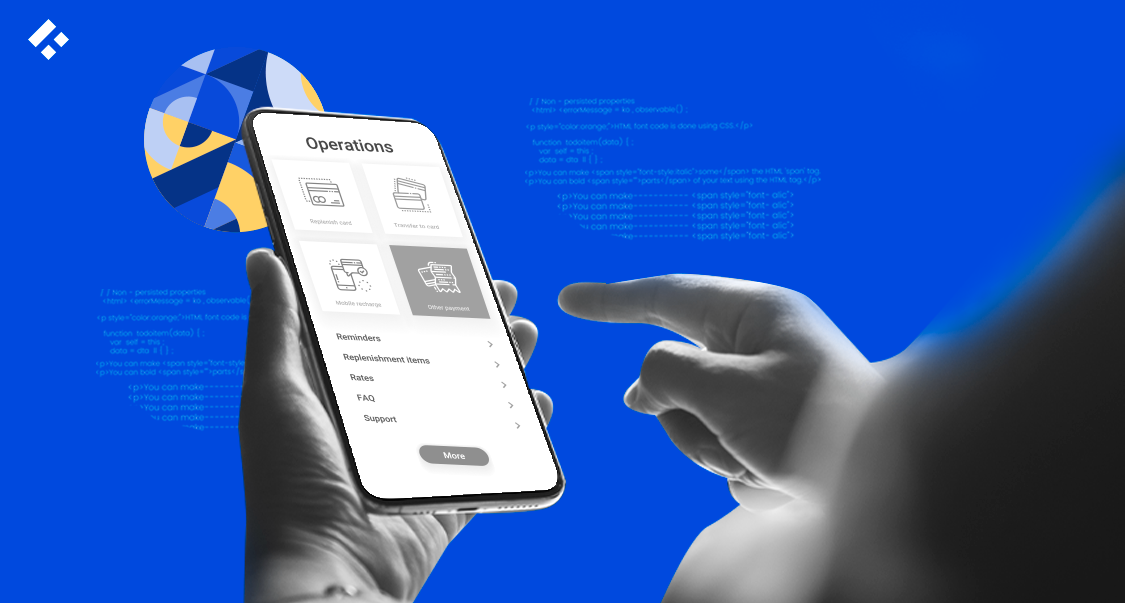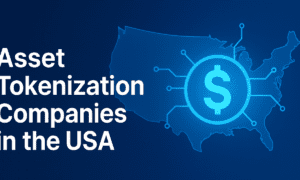Today, technology has become the ultimate enabler. From digital wallets to investment management platforms, FinTech apps have completely transformed how individuals and businesses handle money. At the heart of these innovations are the mobile app developers in Austin, who are known for their deep technical expertise and innovative mindset.
This article explores what type of tech stacks Austin app developers use to develop FinTech apps, why they choose them, and how these choices ensure performance, security, and scalability in a highly regulated financial environment.
Understanding the Core of FinTech App Development
FinTech, short for financial technology, refers to digital solutions that simplify, automate, or enhance financial services. Examples include mobile banking apps, peer-to-peer payment systems, robo-advisors, and cryptocurrency platforms.
Developing such applications isn’t just about writing code—it’s about ensuring data security, regulatory compliance, real-time processing, and flawless user experience. A fintech app development company carefully selects the right tech stack to deliver these core capabilities efficiently.
Before diving into the specific tools and technologies, it’s essential to understand what a “tech stack” is.
A tech stack refers to the combination of programming languages, frameworks, libraries, and tools used to build and run an application. For FinTech apps, the ideal tech stack ensures security, scalability, and seamless integration with financial APIs and third-party services.
Why Austin Leads in FinTech App Development
Austin, Texas, has become one of the fastest-growing tech hubs in the United States. With a thriving startup ecosystem, tech talent pool, and a culture of innovation, it’s no surprise that Austin is home to many of the top fintech app development services providers in the country.
There are a few reasons why businesses prefer working with an Austin mobile app development company for FinTech projects:
- Access to Highly Skilled Developers: Austin’s universities and tech scene produce a constant stream of talented engineers specializing in emerging technologies like blockchain, AI, and cloud computing.
- Startup and FinTech Ecosystem: Austin’s supportive startup community and financial innovation programs make it ideal for FinTech growth.
- Culture of Innovation: Austin’s developers are known for creative problem-solving—essential for designing user-friendly and secure FinTech solutions.
- Proximity to Major Financial Centers: Austin’s geographic and economic position provides easy collaboration with financial institutions in Dallas, Houston, and beyond.
The Foundation: Front-End Tech Stack
A FinTech app’s success depends heavily on its user interface (UI) and user experience (UX). The front end is what customers interact with—making performance, responsiveness, and accessibility top priorities.
1. Frameworks and Libraries
Austin-based developers often rely on modern, component-based frameworks for frontend development:
- React.js – Popular for building scalable, dynamic interfaces with reusable components.
- Angular – Ideal for complex enterprise FinTech dashboards that require real-time data updates.
- Vue.js – Lightweight and flexible for smaller FinTech applications or prototypes.
These frameworks allow mobile app developers in Austin to create smooth, responsive interfaces while ensuring performance across devices.
2. Mobile Frameworks
Given that many users access FinTech platforms via mobile apps, the mobile-first approach is crucial. Commonly used mobile technologies include:
- React Native – Enables cross-platform app development with native-like performance.
- Flutter – Developed by Google, Flutter offers a single codebase for Android and iOS with excellent UI capabilities.
- Swift (for iOS) and Kotlin (for Android) – Preferred for building native FinTech apps with maximum optimization and security.
These tools are often used by an Austin mobile app development company to deliver top-tier mobile FinTech experiences that are fast, reliable, and visually appealing.
The Backbone: Back-End Tech Stack
While the frontend creates the first impression, the backend powers the app’s core logic—handling transactions, user authentication, and secure data management.
1. Programming Languages
FinTech apps demand reliability, scalability, and speed. Developers in Austin commonly use:
- Python – Loved for its simplicity and strong libraries for data analytics and AI (e.g., NumPy, Pandas).
- Java – A long-standing favorite for secure enterprise-level applications.
- Node.js – Perfect for real-time financial data processing and API integrations.
- Go (Golang) – Increasingly popular for high-performance and concurrent transaction systems
Each language has specific advantages. For instance, Python is often chosen for risk analysis or fraud detection systems, while Go or Java may power high-frequency trading apps that require millisecond-level responsiveness.
2. Frameworks
- Django (Python) and Spring Boot (Java) provide structured, secure frameworks ideal for regulatory compliance and rapid development.
- Express.js (Node.js) enables flexible and lightweight backends for FinTech APIs and microservices.
Security and Compliance Stack
Security is non-negotiable in FinTech. Austin developers integrate multiple layers of protection to ensure that user data and financial transactions remain safe.
1. Encryption and Authentication
Commonly used tools include:
- JWT (JSON Web Tokens) for secure user sessions.
- OAuth 2.0 for authentication across services.
- AES and RSA encryption algorithms for data protection.
2. Compliance Tools
FinTech apps must comply with standards like PCI DSS, KYC, and GDPR. Austin’s FinTech teams often integrate APIs and compliance automation tools like:
- Trulioo for identity verification (KYC/AML).
- Plaid and Yodlee for secure financial data aggregation.
- Snyk and SonarQube for code security analysis.
This commitment to compliance gives businesses confidence when partnering with a fintech app development company in Austin.
The Data Layer: Databases and Storage
Data is at the heart of any FinTech application—transactions, account balances, credit scores, and analytics all rely on efficient and secure databases.
1. Relational Databases
- PostgreSQL – Favored for its advanced security, reliability, and support for complex queries.
- MySQL – Often used for simpler financial applications.
2. NoSQL Databases
- MongoDB and Cassandra are popular for handling unstructured or semi-structured data, especially for real-time analytics and transaction logs.
3. Caching and Storage
- Redis – Commonly used for caching and improving speed in transaction-heavy applications.
- Amazon S3 and Google Cloud Storage – For secure data storage and backup.
By leveraging these tools, mobile app developers in Austin ensure data consistency, fast query responses, and uninterrupted financial operations.
APIs and Third-Party Integrations
Modern FinTech apps rarely operate in isolation. They integrate with third-party financial APIs and tools to enhance functionality. Austin developers rely on APIs for:
- Payment Processing: Stripe, PayPal, Square.
- Banking Integration: Plaid, Yodlee.
- Credit Scoring: Experian, Equifax APIs.
- Investment Data: Alpha Vantage, IEX Cloud.
These integrations allow FinTech products to offer seamless banking, payment, and trading features—all within a single app ecosystem.
Cloud Infrastructure and DevOps Tools
Scalability is essential for FinTech platforms, especially those handling thousands of concurrent transactions. Austin’s developers rely heavily on cloud-based infrastructure for flexibility, cost-effectiveness, and performance.
1. Cloud Providers
- Amazon Web Services (AWS) – Offers extensive financial-grade cloud security and scalability.
- Google Cloud Platform (GCP) – Known for AI-driven analytics and real-time data processing.
- Microsoft Azure – Preferred by many enterprise FinTech apps for compliance and hybrid deployment.
2. DevOps Tools
To ensure smooth development and deployment cycles:
- Docker & Kubernetes for containerization and orchestration.
- Jenkins, GitLab CI/CD, and CircleCI for continuous integration and deployment.
- Terraform for Infrastructure as Code (IaC).
These tools ensure continuous delivery, scalability, and minimal downtime—core values in FinTech development.
Emerging Technologies in FinTech Development
Austin’s innovative environment drives the adoption of emerging technologies that redefine FinTech capabilities:
1. Blockchain
Used for secure transactions, decentralized finance (DeFi), and transparent ledgers. Austin developers often leverage Ethereum, Hyperledger, or Solana frameworks.
2. Artificial Intelligence & Machine Learning
AI models are used for:
- Fraud detection and risk assessment.
- Predictive analytics for investments.
- Personalized financial recommendations.
Python-based libraries like TensorFlow, PyTorch, and Scikit-learn are widely used.
3. APIs for Open Banking
As open banking regulations expand, FinTech developers in Austin integrate open APIs to enhance transparency and user control over financial data.
4. Quantum-Resistant Cryptography
Some cutting-edge Austin teams are experimenting with post-quantum encryption to prepare for next-generation security threats.
The Austin Advantage: Collaboration Meets Innovation
Austin’s collaborative tech community is what truly sets it apart. Local FinTech meetups, hackathons, and accelerators—such as Capital Factory and Austin FinTech Group—encourage innovation, mentorship, and partnerships between startups, banks, and developers.
When you work with an Austin mobile app development company, you’re not just hiring coders—you’re collaborating with innovators who understand financial technology from both a technical and business perspective.
This blend of creativity and expertise enables them to deliver fintech app development services that are not only technically sound but strategically impactful.
Conclusion
The FinTech revolution thrives on trust, innovation, and technology. Austin has positioned itself as a leading city for building the next generation of FinTech applications by merging creativity with technical excellence.
From robust backend languages like Python and Java to frontend frameworks like React and Flutter, and from cloud scalability to blockchain innovation, the mobile app developers in Austin are shaping the financial technologies that define our digital economy.
By leveraging advanced tech stacks and maintaining an unwavering focus on security and compliance, an Austin mobile app development company can help businesses build reliable, scalable, and future-ready financial solutions.
In short, Austin’s FinTech ecosystem represents the perfect balance between cutting-edge technology and practical financial innovation—making it one of the most exciting places in the world to build the future of finance. Get in touch with Appingine today & build your fintech apps in Austin.





























